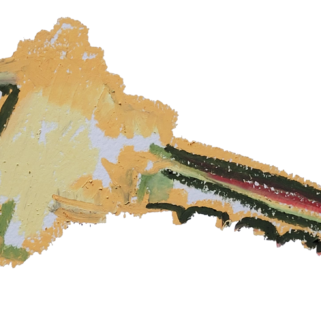The Prince Elementary School in New Haven’s Hill neighborhood stands across
the street from the Welch Annex School. Neither one has an auditorium. They
share an insufficient library. The weedy playing field that serves both
schools extends over less than a quarter of an acre. It had been clear for
years that the schools needed renovation. In fact, the city began planning
to fix them seven years ago. So when the news that they would be rebuilt
finally came, some neighborhood residents were pleasantly surprised. For
18 families, however, the news was bittersweet: Their homes would be demolished
in the process.
The reconstruction of Prince and Welch Elementary schools, slated to begin
in the coming months, is part of a school construction program launched
in 1996. After a facilities review determined that 40 percent of New Haven’s
schools are at least 50 years old, Mayor John DeStefano began a comprehensive
$1.1 billion rebuilding program that has been applauded as his great service
and legacy to New Haven. Not since the 1960s has New Haven undertaken such
a grand-scale project in the city’s schools. And never before has the city
garnered the energy and funds to create schools that will rival those of
the best districts across the nation.
This past fall, Mayor DeStefano’s campaign literature reminded voters of
his pledge to build improved schools with state-of-the-art facilities. But
the residents of the Hill North neighborhood don’t feel the benefits of
the city’s vast program. In a last plea from the Hill’s Hispanic residents
to save their homes from imminent demolition, messages such as "Guarda
este hogar" are written on boarded windows. Only last August, one year
after the site for the new school had been chosen, Hill resident Sheryl
Horner learned that she was living on the school’s new site. Horner’s mother,
who lives on the second floor of her home, still has no place to go. "There
are just no houses for the amount of money she’s being offered [by the city],"
Horner tells me. According to Pastor Ruth Drews of Resurrection Lutheran
Church, the owners of homes with a market value of $65,000 have been offered
only $30,000 from the city. One family was able to obtain a generous $61,000
from the city for a home with a market value of $74,245 only after they
hired a private attorney.
Hill North residents finally mobilized in January as part of Save the Upper
Hill Now (suhn), "a neighborhood association for justice and rebuilding
in the upper hill." Community meetings were held and residents, organized
by Pastor Drews, presented the Mayor with a list of demands, including an
immediate cessation of evictions and the organization of four more site
committee meetings. At a meeting organized by suhn on March 26, Mayor DeStefano
rejected each of the organization’s demands. And he continues to counter
the accusations that the site selection process took place behind closed
doors. "The site selection and hearing process occurred over a three
year period," DeStefano asserts. "Ads were placed in newspapers,
articles were written." The public hearings included Mayor’s Night
Out, where the first announcement of the site selection took place in the
fall of 1998. "I don’t go to a Mayor’s Night Out to find out that a
school construction project is going to result in the demolition of houses
in my backyard," Pastor Drews says. According to Drews, the letters
about the public hearings were misdirected and sent to old addresses that
were no longer correct. "The city’s mailing list for this neighborhood
was at least seventeen years old."
The voice of Hill residents appears to have surfaced too late. City officials
insist that the outreach efforts in the Hill neighborhood were exhaustive
and that it is simply too late to begin a new site selection process. "$3.5
million has already been spent," says Communications Director of the
New Haven Public Schools Catherine Sullivan-DeCarlo. "That’s a lot
of money."
Had Hill residents instigated their protest earlier, would the city have
responded to their requests? When residents in the East Rock neighborhood
learned that the school renovation plan included the demolition of residents’
homes, a committee of parents immediately put together an extensive report
on 22 alternative sites and hired a lawyer to defend their property against
the city’s claim of eminent domain. David Cameron, a Yale professor and
East Rock resident, recalls that the construction project was halted and
the Mayor "created a different, more public process."
Pastor Drews remains convinced that "that middle-class neighborhood
of East Rock was treated incredibly differently." Sitting in her office,
which is cluttered with drafts of sermons and city contracts, Pastor Drews
contends "that it would seem to me in the u.s. you give equal treatment
to neighborhoods of all classes. This is a poor, disempowered neighborhood,
and it’s difficult for people to see that they can oppose this." Drews
believes that the apathy of Hill residents should have motivated the city
to reach out to the community, and Cameron agrees. "Residents in East
Rock most likely had more sources of information, more resources. We got
information that the Hill residents weren’t able to get."
Walking down Ward Street, Pastor Drews points out three houses just named
as part of a historic district that will soon be demolished. "These
houses have been home to immigrants for 100 years and they are still standing,"
Drews says, "Even immigrants of modest means, a hundred years ago,
were provided housing that had dignity, design and enabled them to live
with a sense of respect. Now it’s just blight." But the blight that
we so often associate with neglect tells a different story in the Hill neighborhood-the
story of residents trying too late to empower themselves, and a city trying
too hard to do what’s best.


